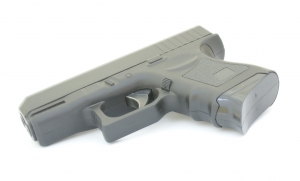 According to an article in the MetroWest Daily News, a Framingham teen brought a stun gun to Framingham High School this past week. The article states that the school administration had received a tip that the juvenile was bringing the stun gun to school and the school called the police. An officer then confronted the teen at the school. He reportedly agreed to let the officer search his bag, which resulted in the recovered of the stun gun. The article states that there was no indication that anyone had used the weapon. The teen was subsequently charged with possession of a stun gun under G. L. c. 140, § 131J and carrying a dangerous weapon under G. L. c. 269, § 10.
According to an article in the MetroWest Daily News, a Framingham teen brought a stun gun to Framingham High School this past week. The article states that the school administration had received a tip that the juvenile was bringing the stun gun to school and the school called the police. An officer then confronted the teen at the school. He reportedly agreed to let the officer search his bag, which resulted in the recovered of the stun gun. The article states that there was no indication that anyone had used the weapon. The teen was subsequently charged with possession of a stun gun under G. L. c. 140, § 131J and carrying a dangerous weapon under G. L. c. 269, § 10.
To convict the defendant of possession of a stun gun, the Commonwealth would have to prove the following beyond a reasonable doubt: (1) that the defendant possessed and item; (2) that the item meets the definition of a stun gun – i.e., that the item is a portable device or weapon from which an electrical current, impulse, wave or beam may be directed, which current, impulse, wave or beam is designed to incapacitate temporarily, injure or kill; and (3) that the defendant knew that he possessed the stun gun.
As to this charge, the defendant appears to have a legitimate defense: namely that the statute outlawing the possession of a stun gun is unconstitutional because the 2nd Amendment the right to carry such a weapon. Specifically, in a recent case decided by the United States Supreme Court – Caetano v. Massachusetts – the Court stated as much, thereby eviscerating the constitutionality of the statute. In light of the court’s decision, the defendant can file a motion to dismiss and should prevail. Continue reading →
 Massachusetts Criminal Lawyer Blog
Massachusetts Criminal Lawyer Blog






 A Framingham man was arrested last week on gun charges. According to an article in the
A Framingham man was arrested last week on gun charges. According to an article in the